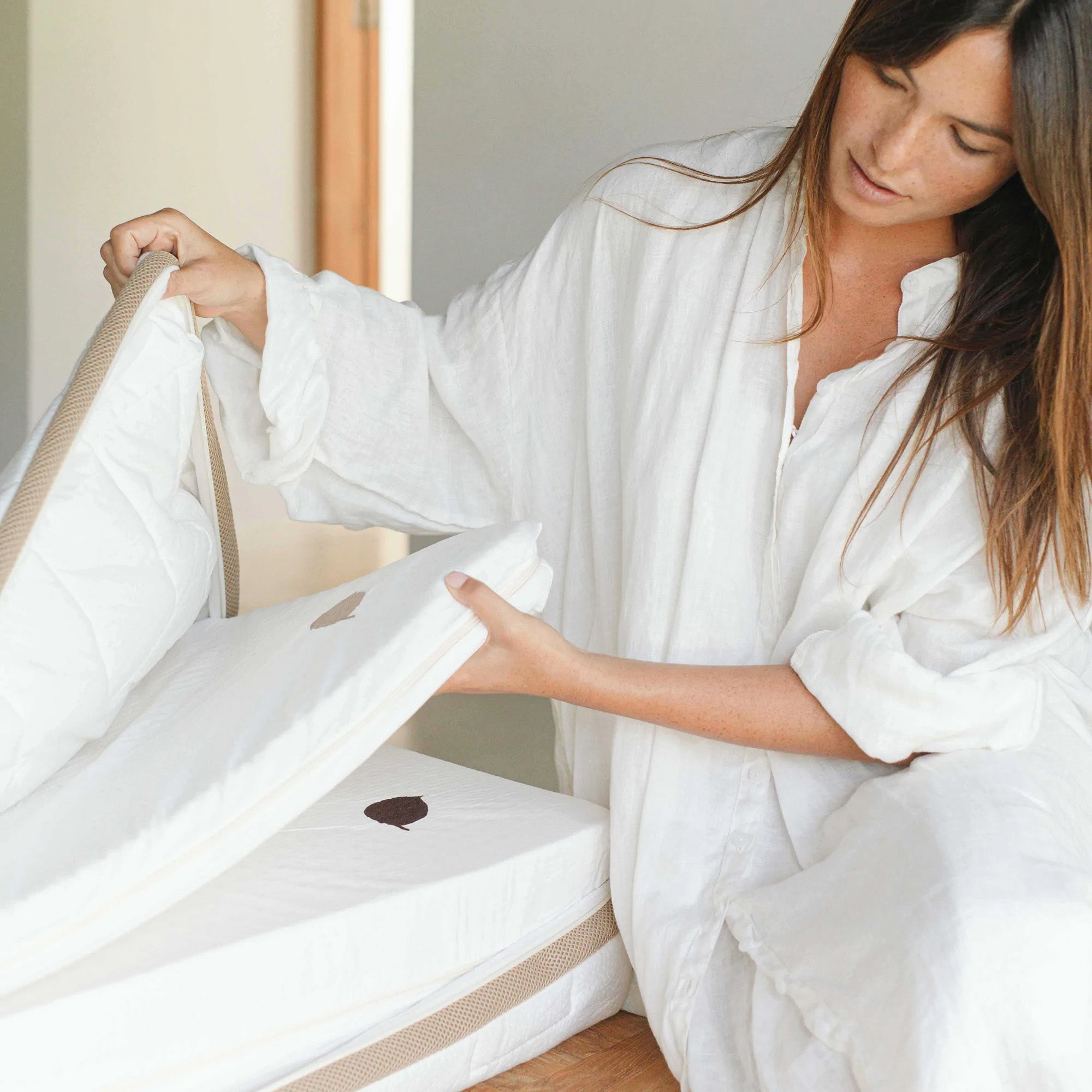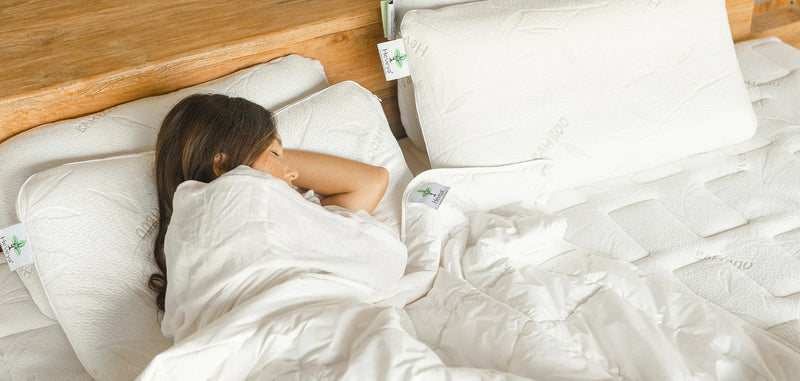Back pain is one of the most common complaints of people nowadays. There aren’t a lot of people who weren’t confronted with back pain complaints at least once in their life. Research shows that 80% of the population in the industrialized world has had a period in their life where back pain complaints arose. They usually occur when people are between 35-55 years old. What are the do’s and don’ts when it comes to relieving your aches? Since we often have customers visiting Heveya® that wake up with sore necks, painful backs and hurtful shoulders, we decided to share our extensive research to address the role of sleeping hard/soft in this debate.
Sleeping on a soft surface
When the bed is too soft and sags too much, the body will follow the curves of the sagged mattress. In this case, we speak of the “hammock-effect”, illustrating the abnormal curve in the spine. Different researchers point out that in order to support the body, there should be no sign of the hammock-effect visible. As illustration A shows, the spine is not aligned correctly and will not relieve back pain. A mattress support that is too soft, would contour the body too extensively, causing a limited freedom of movement and limited moisture drainage. In this case, the sleeper would need to use muscles to stabilize the body in an adequate sleeping position. Because continuously making use of our muscles during our sleep is impossible, the body will bend back into the sagged pit, causing limited freedom of movement and strain for certain muscle groups.

Sleeping on a hard surface
When the mattress support is too hard, the spine is also not supported correctly. A bed that is too firm does not conform to your body’s movements and doesn’t offer enough elasticity. On such a surface, only shoulders and pelvis-areas are supported, while the spine bends downwards, causing a very unnatural S-shaped curve, as seen on illustration B. This S-shaped curve is caused by the shoulders that are wider than the pelvis-area. Apart from that, the waist-area is also smaller than hips and shoulders. Under influence of gravity, the lumbar spine at the height of the waist will also bend downwards, causing this S-shape. It could be compared with the image of a “hanging bridge” between shoulder and pelvis area.
When sleeping on a mattress that is too hard, there is too much freedom of movement. Because of the fact that the mattress surrounds the body insufficiently, the sleeper could fall from the mattress easily and will cause the sleeper to feel cold easily. Moreover, a firm mattress will cause higher pressure on certain places. Because of this overpressure, the body starts to ache and the sleeper will change sleeping positions more frequently, causing discomfort to the sleeper. Moreover the muscles can’t relax to the fullest. It is safe to say that the sleeper can’t recover both physically and emotionally when sleeping on a mattress that is found to be too firm.
Conclusion
Both with sleeping on a surface that’s too soft or too hard, the spine will be supported insufficiently. These ways of sleeping not only have a bad influence on the curvature of the spine, but also on others like nerve & vascular structures. Apart from that, it’s safe to assume that the sleeper will be negatively influenced by numerous other factors: excessive transpiration, limited freedom of movement or not being able to stabilize ones’ body. The solution to all of these problems would be a mattress that supports your spine properly while you sleep. Those with a bad back require a good balance between support and comfort. We hope to help you with that at Heveya®. For more information, please visit our mattress guide here in order to find the best mattress to relieve back pain.













